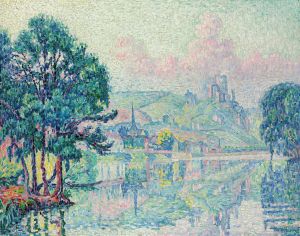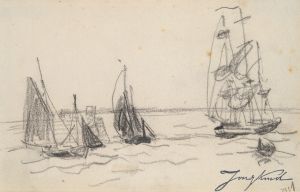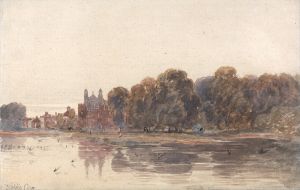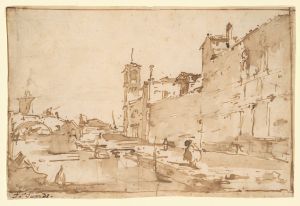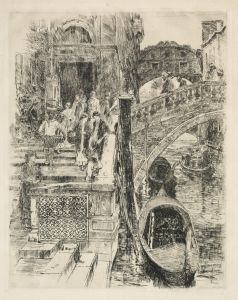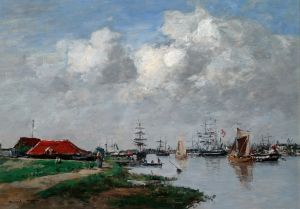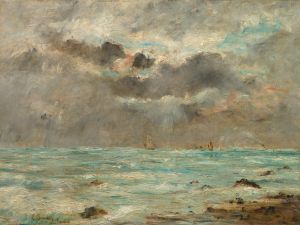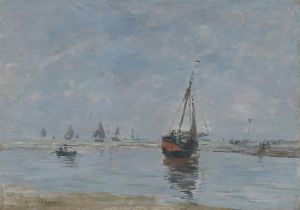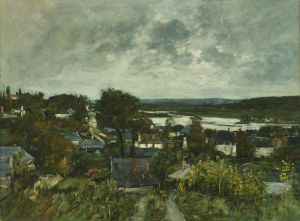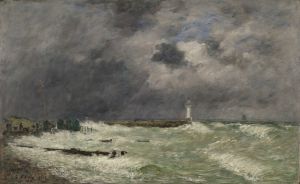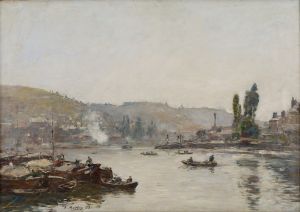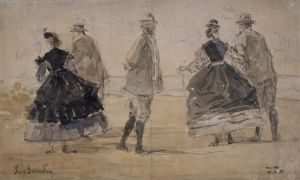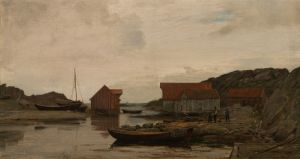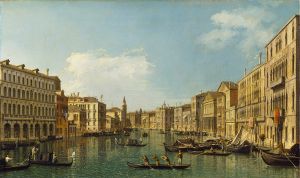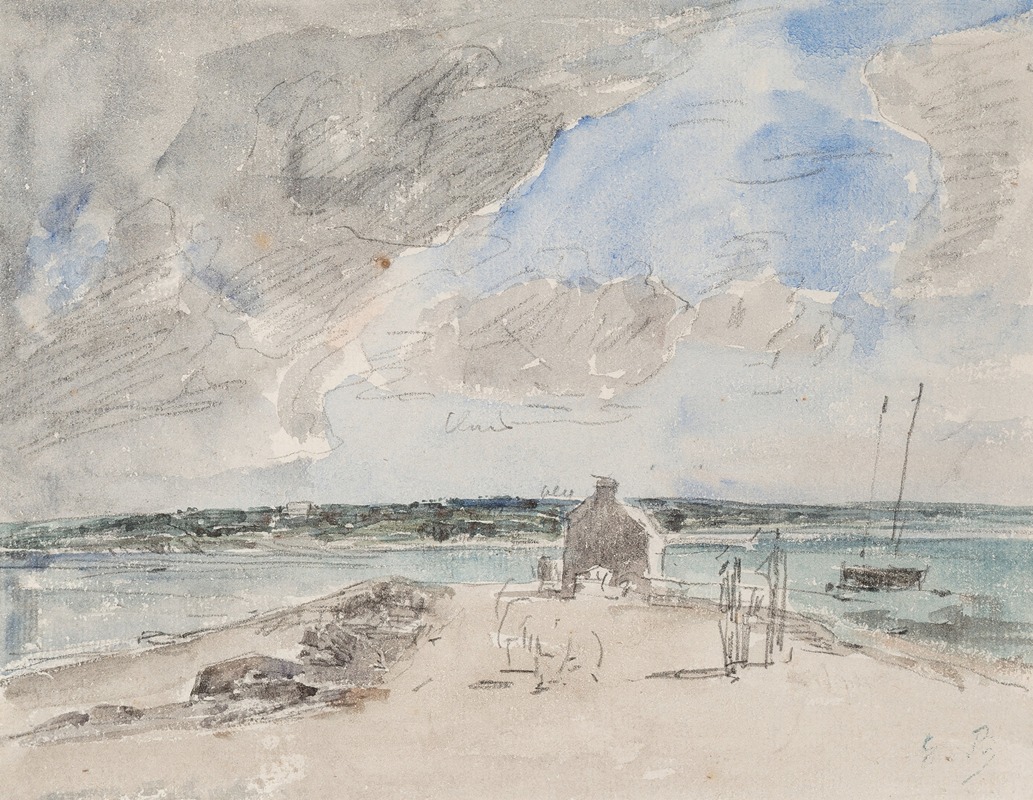
Plougastel, le passage à l’embouchure de la rivière de Landerneau
A hand-painted replica of Eugène Boudin’s masterpiece Plougastel, le passage à l’embouchure de la rivière de Landerneau, meticulously crafted by professional artists to capture the true essence of the original. Each piece is created with museum-quality canvas and rare mineral pigments, carefully painted by experienced artists with delicate brushstrokes and rich, layered colors to perfectly recreate the texture of the original artwork. Unlike machine-printed reproductions, this hand-painted version brings the painting to life, infused with the artist’s emotions and skill in every stroke. Whether for personal collection or home decoration, it instantly elevates the artistic atmosphere of any space.
Eugène Boudin, a prominent French painter associated with the Impressionist movement, is renowned for his depictions of landscapes, seascapes, and coastal scenes. One of his works, Plougastel, le passage à l’embouchure de la rivière de Landerneau (translated as Plougastel, the Crossing at the Mouth of the Landerneau River), exemplifies his mastery in capturing the interplay of light, water, and atmosphere.
This painting portrays a scene near Plougastel-Daoulas, a commune in the Brittany region of France. The location depicted is at the mouth of the Landerneau River, an area known for its natural beauty and maritime activity. Boudin's choice of this setting reflects his lifelong fascination with coastal environments and his ability to render their transient qualities. The painting likely features figures, boats, and the surrounding landscape, elements commonly found in Boudin's works, though specific details about the composition of this particular piece are limited.
Boudin was celebrated for his plein air (outdoor) painting technique, which allowed him to observe and capture the nuances of natural light and weather conditions directly from life. This approach influenced the Impressionists, including Claude Monet, who regarded Boudin as a mentor. In Plougastel, le passage à l’embouchure de la rivière de Landerneau, Boudin's characteristic use of soft, diffused light and his attention to atmospheric effects are likely evident, showcasing his ability to evoke a sense of place and moment.
The exact date of the painting's creation is not well-documented, but it is consistent with Boudin's frequent travels to Brittany, where he painted numerous scenes of the region's harbors, rivers, and coastal villages. His works from this period often reflect the daily life and activities of the local population, emphasizing the connection between people and their environment.
As with many of Boudin's works, Plougastel, le passage à l’embouchure de la rivière de Landerneau demonstrates his skill in blending realism with an impressionistic sensitivity to light and color. The painting is part of the broader legacy of Boudin's contributions to 19th-century art, which paved the way for the Impressionist movement and its focus on capturing the fleeting effects of light and atmosphere.
Further specific details about the painting, such as its current location or provenance, are not readily available in existing records.





